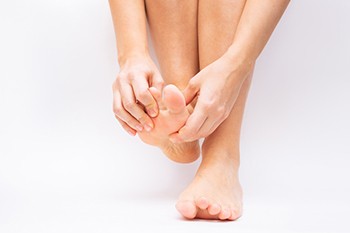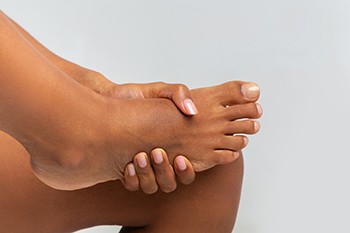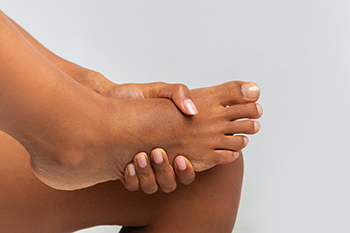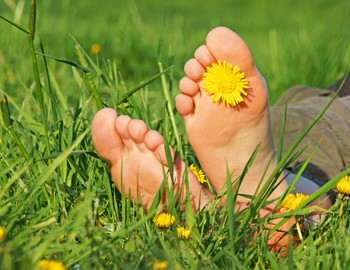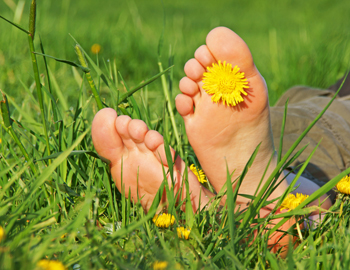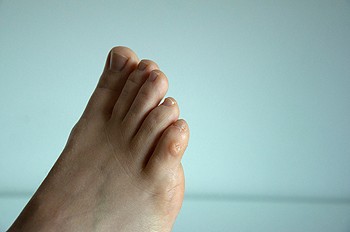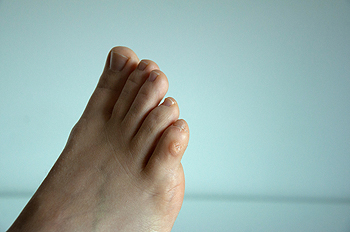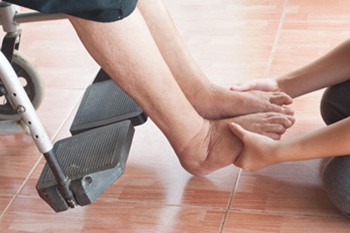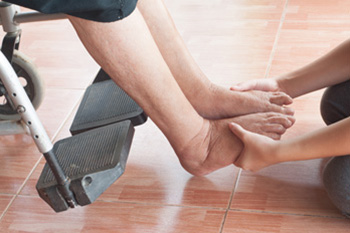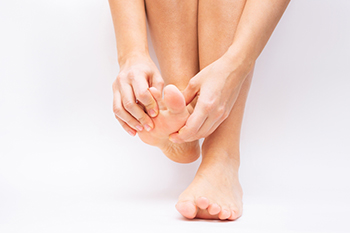
Toe pain can range from being irritating to debilitating, and it may be difficult to wear shoes and socks. Common causes for toe pain include bunions, nail conditions, or certain types of arthritis. Toe pain may develop suddenly or gradually, and symptoms can include a burning or prickling sensation. There are 14 bones in the toes, which are surrounded by muscles, tendons, nerves, and blood vessels. An injury to the toe is a common source of toe pain, in addition to having poor circulation. There are specific foot conditions that can cause toe pain, including hammertoe, tendinitis, or Morton’s neuroma. A severe infection may cause extreme toe pain, and could be accompanied by confusion, a high fever, or shortness of breath. Many times a proper diagnosis is performed, which generally consists of having an X-ray taken. Mild relief may come from elevating the affected foot with the shoe removed. If you are experiencing toe pain, please consult a podiatrist who can determine the cause and properly treat it.
Toe pain can disrupt your daily activities. If you have any concerns, contact one of our podiatrists of Biebel & DeCotiis Podiatry Associates. Our doctors can provide the care you need to keep you pain-free and on your feet.
What Causes Toe Pain?
Most severe toe pain is caused due to a sports injury, trauma from dropping something heavy on the toe, or bumping into something rigid. Other problems can develop over time for various reasons.
Toe pain can be caused by one or more ailments. The most common include:
- Trauma
- Sports injury
- Wearing shoes that are too tight
- Arthritis
- Gout
- Corns and calluses
- Hammertoe
- Bunions
- Blisters
- Ingrown toenails
- Sprains
- Fractures (broken bones)
- Dislocations
When to See a Podiatrist
- Severe pain
- Persistent pain that lasts more than a week
- Signs of infection
- Continued swelling
- Pain that prevents walking
Diagnosis
In many cases the cause of toe pain is obvious, but in others, a podiatrist may want to use more advanced methods to determine the problem. These can range from simple visual inspections and sensation tests to X-rays and MRI scans. Prior medical history, family medical history, and any recent physical traumatic events will all be taken into consideration for a proper diagnosis.
Treatment
Treatments for toe pain and injuries vary and may include shoe inserts, padding, taping, medicines, injections, and in some cases, surgery. If you believe that you have broken a toe, please see a podiatrist as soon as possible.
If you have any questions please feel free to contact one of our offices located in Holmdel and Middletown, NJ . We offer the newest diagnostic tools and technology to treat your foot and ankle needs.
